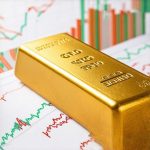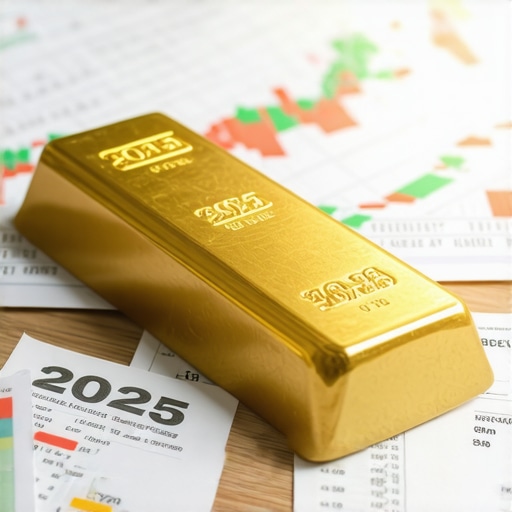Why Gold ETFs and Mutual Funds Are the Unsung Heroes of Stable Investing
Imagine this: the stock market is doing its usual rollercoaster act, leaving investors gripping their seats, while gold quietly glimmers, offering a calm harbor amidst the storm. For those craving stability with a dash of growth, gold Exchange-Traded Funds (ETFs) and mutual funds present a compelling alternative—an investment tale that’s been unfolding with quiet confidence for decades.
Gold isn’t just shiny metal; it’s a financial sanctuary. But how do you capture its magic without the hassle of storing physical bars or coins? Enter gold ETFs and mutual funds, the modern investor’s answer to gold exposure without the fuss. They offer liquidity, diversification, and professional management—no dusty vaults or authenticity checks required.
Not All Gold Funds Are Created Equal: Picking Winners in a Glittering Crowd
Just like not every gold nugget shines the same, gold ETFs and mutual funds vary widely in strategy, fees, and performance. Some track physical gold prices directly, while others invest in gold mining companies or a blend of both. The key is to sift through options with an expert eye, considering expense ratios, fund size, and historical stability.
For instance, funds that focus on large-cap gold miners can ride the waves of operational leverage, but also face risks tied to company management and geopolitical issues. On the flip side, pure gold ETFs tend to mirror the metal’s price movements more closely, offering a more predictable hedge against inflation and market volatility.
Is It Time to Swap Some Stocks for Gold ETFs in Your Portfolio?
As inflation concerns and global uncertainties linger, many investors ask themselves: should I rebalance my portfolio and increase my allocation towards gold-based funds? The answer depends on your risk appetite and investment horizon. Gold ETFs and mutual funds provide a cushion during turbulent times but aren’t a silver bullet for all market woes.
For a deeper dive into how gold acts as a hedge against inflation and market volatility, this insightful guide is a must-read. It elaborates on gold’s unique role in safeguarding portfolios when traditional assets falter.
It’s worth noting that according to the World Gold Council, gold ETFs have seen record inflows in recent years, reflecting growing investor confidence in gold’s defensive qualities (source).
Ready to Shine? Share Your Gold Investment Stories!
Whether you’re a seasoned gold bug or just testing the waters with your first ETF purchase, we want to hear from you. Have you found a gold fund that sparkles with steady returns? Or maybe you have questions about navigating the gold fund landscape? Drop your thoughts and experiences in the comments below and join the conversation.
And if you’re eager to explore the top gold ETFs and mutual funds handpicked for steady growth and diversification, check out this comprehensive roundup. Because in the world of investing, sometimes the best treasures are the ones you hold in your digital portfolio.
Diving Deeper: How Gold Fund Strategies Shape Your Investment Outcome
While gold ETFs and mutual funds share the common goal of gold exposure, the nuances in their underlying strategies can significantly impact your portfolio’s risk and return profile. Funds that invest directly in physical gold typically offer a purer hedge against inflation and currency fluctuations. However, those investing in gold mining equities introduce elements like operational leverage and company-specific risks, which can amplify gains but also heighten volatility.
Understanding these distinctions is crucial, especially in 2025, where geopolitical tensions and supply chain disruptions add layers of complexity. For example, a fund heavily weighted in mining stocks might outperform during periods of rising gold prices but suffer from regulatory or environmental setbacks affecting specific miners.
To master this terrain, investors should evaluate fund prospectuses carefully and consider their own investment horizon and risk tolerance. More detailed guidance on selecting appropriate gold investment vehicles can be found in our comprehensive overview of gold investment types.
Central Banks’ Role: The Invisible Hand Steering Gold Markets
One often overlooked but critical factor influencing gold ETFs and mutual funds is central bank activity. Central banks worldwide have been net buyers of gold in recent years, driven by diversification away from the U.S. dollar and geopolitical uncertainties. Their purchases impact gold supply and demand dynamics, affecting prices indirectly but powerfully.
For investors, monitoring central bank gold buying trends provides valuable foresight. An uptick in central bank acquisitions usually signals confidence in gold’s long-term value as a safe haven asset, which can buoy the performance of gold funds. Conversely, a slowdown might indicate a shift in monetary policy or global economic outlook.
For an expert-level analysis of how central bank gold purchases shape market dynamics and prices in 2025, check out this insightful article by the World Gold Council.
How Can Advanced Investors Use Gold ETFs and Mutual Funds to Balance Growth and Safety?
Seasoned investors often wrestle with the challenge of balancing capital growth with portfolio safety, especially during periods of economic uncertainty. Gold ETFs and mutual funds offer a versatile toolkit—allowing tactical shifts between physical gold exposure and mining stock leverage.
Advanced strategies might involve layering gold investments across funds with differing risk profiles, or timing allocations based on macroeconomic indicators like inflation trends, interest rate policies, and geopolitical developments. This nuanced approach requires continuous market analysis and a deep understanding of gold’s multifaceted role.
Curious about mastering such strategies? Our guide to smart gold investment strategies offers actionable insights tailored for sophisticated investors seeking to optimize their 2025 portfolios.
Join the Conversation: What Are Your Thoughts on Gold Funds in Today’s Market?
We invite you to share your experiences and insights about investing in gold ETFs and mutual funds. Have you incorporated gold funds into your portfolio this year? What strategies have worked best for you amid the ongoing market volatility? Your perspective enriches the community’s understanding and helps fellow investors make more informed decisions.
Don’t forget to comment below or share this article with friends who are exploring gold as a strategic asset. For those eager to deepen their expertise, explore our curated resources on gold price forecasts and market drivers in 2025 to stay ahead of emerging trends.
Unpacking the Intricacies: Gold Fund Taxation and Regulatory Nuances Investors Must Master
Beyond the glitter and promise, gold ETFs and mutual funds bring along a tapestry of tax and regulatory complexities that savvy investors cannot afford to overlook. For instance, in many jurisdictions, gains from physical gold ETFs are often taxed differently compared to those from mining equity funds. The distinction hinges on whether the fund holds physical bullion or equities, each attracting varying capital gains tax treatments and implications for long-term wealth accumulation.
Moreover, regulatory frameworks governing gold funds differ globally, affecting fund liquidity, transparency, and reporting standards. In the United States, the Internal Revenue Service treats physical gold ETFs as collectibles, subjecting gains to a maximum 28% tax rate, whereas equity-based gold funds are taxed under standard capital gains rules. This subtle yet critical difference can materially impact net returns.
If you’re international, cross-border tax treaties and local securities regulations may further complicate your gold fund investments. Staying ahead requires meticulous consultation with tax professionals and a keen eye on regulatory updates—a task that separates casual investors from true experts.
Can Tax-Efficient Gold Fund Allocation Enhance Portfolio After-Tax Returns in 2025?
Absolutely. Sophisticated investors strategically allocate between physical gold ETFs and miner equity funds, optimizing not only for market exposure but also tax efficiency. For example, holding physical gold ETFs in tax-advantaged retirement accounts can defer tax liabilities, maximizing compounding growth. Conversely, capitalizing on dividend incomes from gold mining mutual funds in taxable accounts might supplement cash flow but demands careful tax planning.
This advanced tax-aware approach is well-documented in the CFA Institute’s research on gold investments, which highlights how tax considerations materially influence investor outcomes and fund selection.
Integrating Gold Funds Into Quantitative Portfolio Models: A New Frontier
Modern portfolio theory has long championed diversification benefits of gold, but integrating gold ETFs and mutual funds into quantitative investment models demands granular understanding of their unique risk-return profiles. Algorithms that incorporate volatility clustering, regime shifts, and correlation dynamics can exploit the asymmetrical behavior of gold during market stress.
For instance, during equity market drawdowns, gold often exhibits negative or low correlation, providing vital portfolio cushioning. Yet, mining equities embedded within some gold funds may correlate more closely to equities, diluting this defensive attribute. Advanced investors use machine learning techniques to parse these nuances, dynamically adjusting gold fund exposure to optimize Sharpe ratios and drawdown control.
Such quant-driven strategies go beyond static allocation, embracing tactical rebalancing triggered by macroeconomic signals and gold market sentiment indicators, thereby refining portfolio resilience in an uncertain 2025 landscape.
Macro-Mining: Leveraging Global Economic Trends to Forecast Gold Fund Performance
Diving further into the macroeconomic fabric, the impact of monetary policy shifts, currency fluctuations, and geopolitical risk on gold fund returns is profound. The interplay between US dollar strength and gold prices is particularly pivotal—typically inverse, but nuanced by real interest rates and inflation expectations.
Advanced analysis involves dissecting central bank policy trajectories, commodity supply-demand imbalances, and mining sector fundamentals to anticipate gold fund performance. For instance, heightened geopolitical tensions in resource-rich regions can disrupt mining operations, disproportionately affecting equity-heavy gold funds compared to physical gold ETFs.
Investors who master this macro-mining approach gain a strategic edge, positioning their portfolios to ride gold’s cyclical waves with precision.
Engage and Elevate: Share Your Advanced Gold Fund Strategies and Insights
Are you leveraging tax strategies or quantitative models to enhance your gold fund investments? Have you identified novel macroeconomic indicators that presage shifts in gold fund performance? Your insights can illuminate pathways for fellow advanced investors navigating the complex 2025 investment terrain.
Join the discussion below or subscribe to our expert newsletter for exclusive analyses that empower your gold investment decisions. For those ready to deepen their mastery, explore our specialized reports on advanced gold fund tactics and portfolio integration—because in the realm of gold investing, knowledge is the true treasure.
Mastering Tax Efficiency: How Understanding Gold Fund Tax Nuances Can Boost Your After-Tax Returns
For the discerning investor, tax efficiency is not merely an afterthought but a pivotal component in maximizing net gains from gold ETFs and mutual funds. The tax landscape surrounding gold investments is multifaceted, influenced by whether funds hold physical bullion or equities, and varies significantly by jurisdiction. Savvy investors recognize that structuring their gold fund allocations to leverage favorable tax treatments can substantially enhance portfolio performance over time.
Take, for example, the distinction in the U.S. where physical gold ETFs are classified as collectibles, subjecting gains to a maximum 28% capital gains tax rate, whereas gold mining equity funds benefit from the standard, lower capital gains tax rates. Incorporating physical gold ETFs within tax-advantaged accounts like IRAs can defer or mitigate tax burdens, while equity-based gold funds can be tactically allocated in taxable accounts to optimize dividend income and growth. This nuanced tax-aware approach is well elucidated in the CFA Institute’s comprehensive research on gold investments, a must-read for those aiming to elevate their tax strategy game.
Can Leveraging Quantitative Models Enhance Gold Fund Allocation and Risk Management?
In an era where data-driven investment decisions reign supreme, integrating gold ETFs and mutual funds into quantitative portfolio models is an avant-garde strategy that sophisticated investors increasingly embrace. These models evaluate complex variables such as volatility clustering, regime shifts, and dynamic correlations, enabling investors to adjust gold exposure tactically in response to shifting market conditions.
Crucially, the defensive characteristics of physical gold ETFs during equity market downturns contrast with the higher correlation mining equities often exhibit to broader stock markets, necessitating granular differentiation within quantitative frameworks. Advanced investors deploy machine learning and algorithmic techniques to optimize Sharpe ratios and mitigate drawdowns by dynamically balancing allocations between physical gold and mining equity funds. For an in-depth exploration of these cutting-edge strategies, consider our expert resource on building a resilient gold ETF portfolio.
Decoding Macro-Mining: How Global Economic Trends Forecast Gold Fund Trajectories
Beyond individual fund mechanics, macroeconomic forces wield profound influence over gold fund performance. Variables such as U.S. Federal Reserve policies, real interest rate shifts, currency fluctuations, and geopolitical tensions interlace to shape gold’s price dynamics. Notably, the inverse relationship between the U.S. dollar and gold prices is modulated by inflation expectations and monetary policy nuances, adding layers of complexity to forecasting.
Moreover, disruptions in gold mining supply chains triggered by political unrest or environmental regulations can disproportionately impact mining-heavy funds compared to physical gold ETFs, underscoring the importance of macro-mining analysis. Investors who adeptly decode these trends can position their portfolios strategically, capitalizing on cyclical upswings and mitigating downside risks. Our detailed examination of key influencers shaping gold prices in 2025 offers invaluable insights for those seeking forecast precision.
Engage with the Gold Investing Elite: Share Your Advanced Strategies and Insights
Have you developed proprietary tax-efficient allocations or quantitative models that refine your gold fund investments? Perhaps you’ve harnessed macroeconomic indicators to anticipate market pivots with precision? Your expertise could illuminate pathways for fellow advanced investors navigating the intricate gold fund landscape of 2025.
Join the conversation below to exchange sophisticated strategies or share this article with your network of fellow investors. For those eager to deepen their mastery, explore our curated analyses on gold price forecasts and market drivers in 2025—because in the realm of gold investing, informed insight is the ultimate treasure.
Expert Insights & Advanced Considerations
Strategic Tax Positioning Amplifies Gold Fund Returns
Understanding the nuanced tax treatment between physical gold ETFs and gold mining equity funds is crucial for maximizing after-tax returns. Sophisticated investors leverage tax-advantaged accounts for physical gold ETFs to defer collectible taxes and allocate mining equities in taxable accounts to optimize dividend income and capital gains. This deliberate structuring enhances portfolio efficiency beyond simple asset allocation.
Dynamic Quantitative Models Enhance Gold Allocation Precision
Incorporating gold ETFs and mutual funds into quantitative portfolio models allows for adaptive allocation strategies that respond to volatility clustering and regime shifts. Physical gold ETFs offer genuine downside protection due to low correlation with equities during market stress, whereas mining equity funds correlate more closely with stocks. Advanced algorithms can tactically balance these exposures to optimize risk-adjusted returns.
Macro-Mining Analysis Enables Proactive Portfolio Positioning
Decoding the interplay of central bank gold purchases, Federal Reserve policies, currency fluctuations, and geopolitical risks empowers investors to anticipate gold fund performance with greater accuracy. For example, supply chain disruptions in mining can disproportionately affect equity-heavy funds, while physical gold ETFs remain insulated. This macroeconomic and sector-specific insight is a competitive edge in 2025.
Central Bank Activity as a Leading Indicator for Gold Fund Trends
Central banks’ sustained net purchases of gold signal confidence in its safe haven status and influence supply-demand dynamics significantly. Monitoring these trends provides early indication of price support or shifts in monetary policy that can affect gold ETFs and mutual funds. Investors who integrate central bank data into their analysis can better time allocations and hedge more effectively.
Layered Gold Fund Strategies Balance Growth and Safety
Combining funds with varying underlying exposures—from pure physical gold ETFs to mining equity mutual funds—allows investors to tailor portfolios that balance stability and growth potential. Tactical shifts informed by macroeconomic signals and market sentiment enhance resilience during economic uncertainty, aligning with evolving risk tolerance and investment horizons.
Curated Expert Resources
- World Gold Council Research Hub: A premier source for authoritative data and analyses on gold demand, central bank purchases, and market trends. Essential for staying abreast of fundamental drivers (Visit World Gold Council).
- CFA Institute Report on Tax Implications for Gold Investors: This comprehensive research demystifies the complex taxation landscape of gold ETFs and mining funds, offering actionable insights for sophisticated tax planning (Read CFA Research).
- Smart Gold ETF Strategies for 2025: An expertly curated guide detailing quantitative and tactical approaches to constructing a resilient gold investment portfolio amid volatility.
- Key Influencers Shaping Gold Prices in 2025: A detailed analysis of macroeconomic and geopolitical factors crucial for forecasting gold fund trajectories.
- Advanced Gold Fund Tactics and Portfolio Integration: A resource for investors seeking to deepen expertise in tax efficiency, quantitative modeling, and macro-mining insight.
Final Expert Perspective
Gold ETFs and mutual funds remain indispensable tools for investors aiming to balance portfolio growth and risk mitigation in an increasingly complex 2025 landscape. Mastery of tax nuances, adept integration into dynamic quantitative models, and vigilant monitoring of macroeconomic and central bank signals empower investors to harness gold’s full potential. As you refine your strategy, engaging with advanced resources and peer insights will elevate your investment acumen.
Explore our comprehensive coverage on gold price forecasts and market drivers in 2025 to stay ahead. Share your professional insights or questions below to enrich our expert community and continue navigating the gold fund landscape with confidence.










